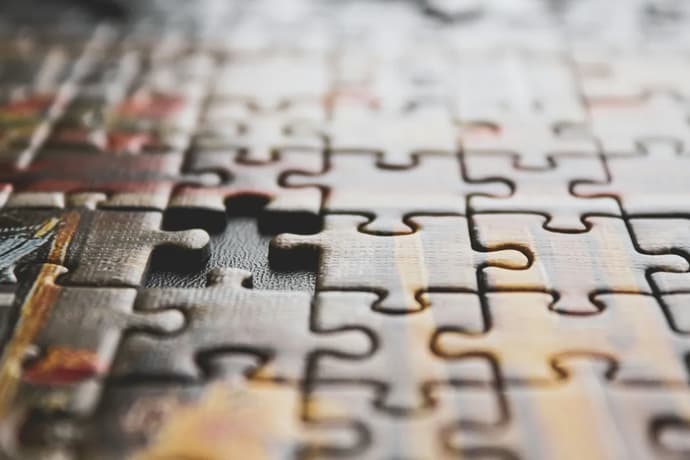
Why Adults Should Play Puzzles: 5 Reasons to Reconnect With Childhood

Childhood often feels like a distant land — filled with simpler joys, slower days, and cozy rituals like solving a puzzle on a rainy afternoon. Today, we move through life at breakneck speed, constantly switching between tabs, apps, tasks, and responsibilities. But what if one of the healthiest ways to slow down and recharge is hidden in something as simple as a jigsaw puzzle?
While puzzles are usually thought of as a child’s pastime, science — and personal experience — tell us otherwise. Adults who regularly play puzzles often report better concentration, less anxiety, and more joy from small daily moments. Here’s why bringing puzzles back into your life might be one of the best things you can do for your brain, your mood, and your sense of balance.
1. It’s Mindful Without Trying to Be
Meditation isn’t for everyone. But puzzles are a form of mindfulness you don’t need to “learn.” When you’re sorting through pieces, aligning edges, or recognizing patterns, your mind enters a state of focused calm. That mental clarity you feel isn’t accidental — it’s your brain downshifting into a more relaxed mode. No breathing apps required.
Even 15–20 minutes a day with a puzzle can reduce background stress and improve your emotional regulation. It’s a simple, quiet habit with deep effects.
2. Puzzles Stimulate the Whole Brain
Jigsaw puzzles activate both hemispheres of the brain. The left hemisphere helps with logic and sequence — figuring out where a piece might go based on shape. The right hemisphere works with colors, images, and intuition — spotting where a pattern continues. This back-and-forth exercise enhances cognitive flexibility, memory, and problem-solving skills over time.
Unlike many mobile games designed to distract and stimulate quickly, puzzles reward slow thinking and patience — both rare and valuable traits in our modern lives.
3. Control, Progress, and Completion
There’s something incredibly satisfying about completing a puzzle. In a world where many projects never truly feel “done,” a finished puzzle offers a rare sense of closure. You took a chaotic pile of pieces and made something beautiful out of it. That sense of control and accomplishment might feel small — but emotionally, it’s powerful.
It’s a moment of “I did that,” and that’s worth more than it seems when your day feels scattered or unpredictable.
4. Digital Detox With Benefits
Unlike social media or fast-paced apps, puzzles are intentionally slow. Whether physical or online, they offer screen time that calms rather than overwhelms. There’s no leaderboard, no competition, no algorithm telling you what to do next. Just you, a challenge, and the joy of solving it at your own pace.
Think of it as a soft-focus moment in a high-definition life. It’s not about escaping — it’s about returning to something simple and satisfying.
5. Nostalgia That Becomes a Ritual
Puzzles don’t just train the brain — they warm the heart. The scent of cardboard, the sound of pieces clicking, the memory of childhood afternoons spent at the table. These sensory and emotional cues create comfort. As adults, reintroducing puzzles into our daily or weekly routine becomes a ritual — like tea in the evening or reading before bed.
It’s a small habit with large emotional returns. And best of all? You don’t need to buy a huge box to start anymore.
Discover PuzzleFree
If you’re curious to try — there’s a new way. PuzzleFree is an upcoming online puzzle game where you can play instantly without creating an account. It works in your browser, on any device, and lets you upload your own images to turn them into puzzles. Whether you want to relax for five minutes or get lost in a big challenge, PuzzleFree is designed to give you that quiet joy of puzzling — wherever you are.
It’s like the classic puzzle box — but with no missing pieces, and always in your pocket. Coming soon at puzzlefree.game.

Kateryna Prykhodko est une auteure créative et une contributrice fiable à EGamersWorld, connue pour son contenu engageant et son attention aux détails. Elle combine la narration avec une communication claire et réfléchie, jouant un rôle important à la fois dans le travail éditorial de la plateforme et dans les interactions en coulisses.
 Les meilleures équipes CS2 en 2025CS2 en 2025 a offert une compétition de haut niveau avec deux Majors, des résultats surprenants et des équipes exceptionnelles. Découvrez le top 10 des équipes et leur impact sur la saison.
Les meilleures équipes CS2 en 2025CS2 en 2025 a offert une compétition de haut niveau avec deux Majors, des résultats surprenants et des équipes exceptionnelles. Découvrez le top 10 des équipes et leur impact sur la saison. Les équipes médias de LoL : la tendance e-sport majeure de 2026Découvrez les meilleures équipes médias de LoL en 2026. De Los Ratones en LEC Versus à French Flair, voyez comment ces organisations utilisent l'influence des streamers pour dominer l'audience et la scène professionnelle.
Les équipes médias de LoL : la tendance e-sport majeure de 2026Découvrez les meilleures équipes médias de LoL en 2026. De Los Ratones en LEC Versus à French Flair, voyez comment ces organisations utilisent l'influence des streamers pour dominer l'audience et la scène professionnelle. Nouveau DLC pour The Witcher 3 : un lien potentiel avec The Witcher 4Ciri fera-t-elle son retour dans un nouveau DLC de Witcher 3 ? Découvrez ce qui est prévu pour mai 2026, son impact sur les fins de la série et son rôle de lien narratif avec la saga Witcher 4 à venir.
Nouveau DLC pour The Witcher 3 : un lien potentiel avec The Witcher 4Ciri fera-t-elle son retour dans un nouveau DLC de Witcher 3 ? Découvrez ce qui est prévu pour mai 2026, son impact sur les fins de la série et son rôle de lien narratif avec la saga Witcher 4 à venir. Comment Donk a gâché la saison 2025Après une domination précoce et des victoires majeures, la saison 2025 de donk avec Team Spirit a lentement perdu de son élan, transformant une excellente année en une année qui semblait inachevée.
Comment Donk a gâché la saison 2025Après une domination précoce et des victoires majeures, la saison 2025 de donk avec Team Spirit a lentement perdu de son élan, transformant une excellente année en une année qui semblait inachevée.

